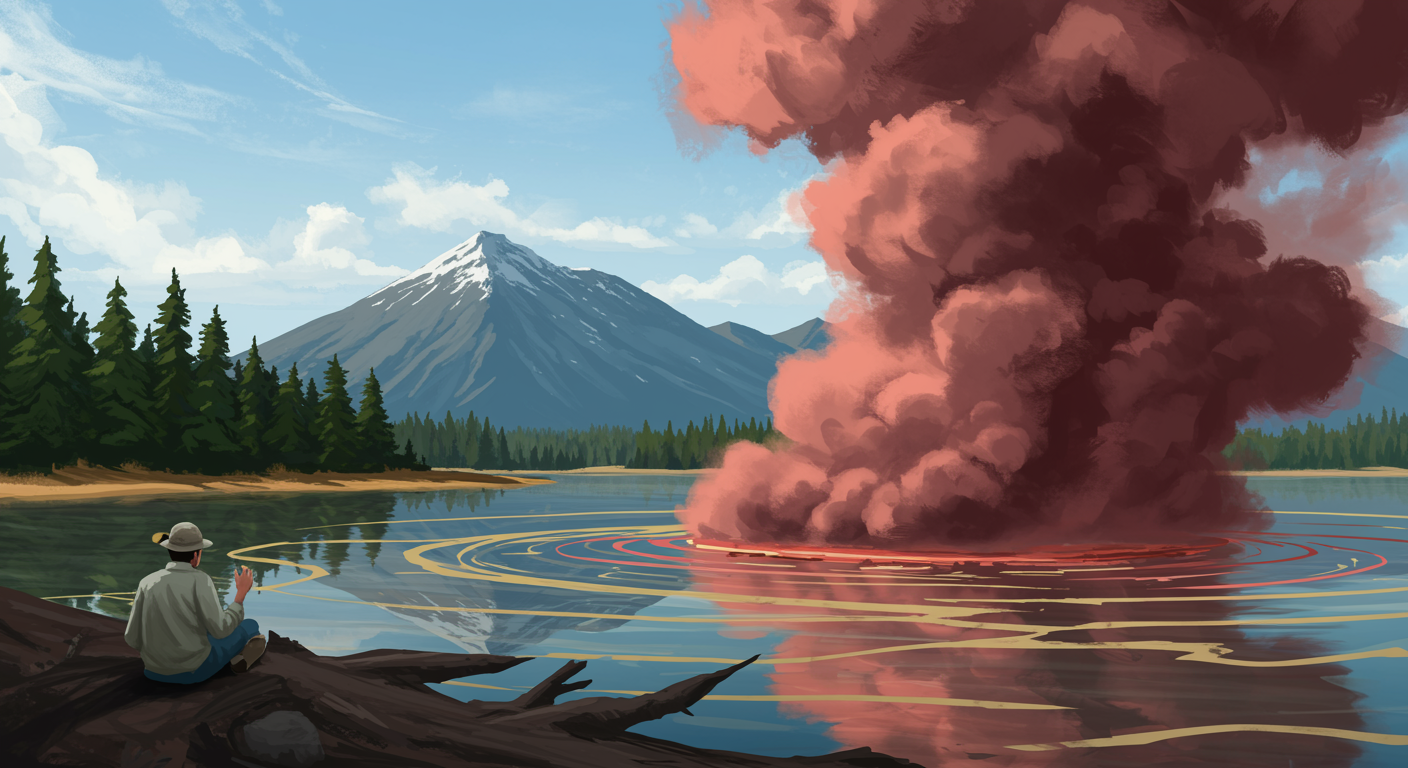
Imagine a tranquil lake, its surface reflecting the sky, a picture of serenity. You might picture a scene where birds glide over calm waters, perhaps a gentle breeze rustles through the surrounding trees. But beneath that peaceful façade, some lakes hold a terrifying secret: a colossal buildup of lethal gas, poised to erupt. These aren’t mythical tales but real bodies of water capable of silently unleashing catastrophe on the unsuspecting nature that surrounds them.
This rare, and largely hidden, natural event is known as a limnic eruption. It occurs when dissolved gases, primarily carbon dioxide, suddenly and violently de-gas from deep lake waters. To understand the sheer scale, think of it like shaking a giant, uncorked soda bottle, but instead of sticky fizz, it releases an invisible, deadly cloud that flows outwards, hugging the ground.
The most devastating example unfolded without warning on August 21, 1986, at Lake Nyos in Cameroon. In a single, horrifying event, the lake vented an estimated 1.6 million tons of carbon dioxide. This dense, colorless, odorless gas flowed down the surrounding valleys, displacing the oxygen-rich air. The silent plume suffocated nearly 1,700 people and thousands of livestock within a 25-kilometer radius. The immediate impact on the local ecosystem was profound; virtually all animal life, from insects to cattle, in the path of the cloud perished.
Just two years earlier, in 1984, another Cameroonian lake, Lake Monoun, experienced a similar, albeit smaller, event, killing 37 people. These tragedies, occurring within such a short timeframe and proximity, shocked the scientific community and compelled them to understand the underlying mechanism. Scientists discovered that these specific lakes share characteristics: they are typically deep, volcanic, and situated in tropical regions, meaning their waters don’t mix much between the upper and lower layers.
In these stratified deep lakes, continuous geological activity, such as volcanic vents or underground springs, slowly releases carbon dioxide into the bottom layers. The immense pressure exerted by the overlying column of water keeps this CO2 dissolved, much like how carbonation remains contained within a sealed bottle of soda. The deeper and colder the water, the more gas it can hold in solution. Over decades, sometimes centuries, dangerous concentrations accumulate at the lakebed. The entire upper ecosystem, bustling with aquatic wildlife and surface plant life, operates unaware of the ticking time bomb below.
So, what triggers this sudden release? A limnic eruption typically requires a disturbance to upset the delicate balance of pressure and gas saturation. A trigger might be a landslide tumbling into the lake, an earthquake, or even unusually heavy rainfall causing significant runoff that disturbs the stable water layers. This disturbance can momentarily reduce the pressure on a small pocket of water, allowing some CO2 to bubble out. Once a few bubbles form and rise, the pressure on the surrounding water decreases further, causing more dissolved gas to rapidly escape in a runaway chain reaction. The resulting CO2 cloud not only starves oxygen from the air but also can make the lake water highly acidic, harming any surviving plant life and aquatic organisms.
Faced with such silent, devastating power, scientists and engineers have worked on solutions to prevent future catastrophes. At both Lake Nyos and Lake Monoun, innovative degassing systems have been installed. These systems consist of pipes that draw gas-rich water from the bottom of the lake and allow the dissolved CO2 to harmlessly bubble out at the surface in a controlled manner. This ongoing process helps lower the gas concentration, mitigating the risk of a spontaneous eruption and buying peace for nearby communities.
These “killer lakes” serve as a stark reminder of the planet’s hidden forces and the complex interplay of geology, chemistry, and biology. They compel us to look beyond the surface, to understand the intricate processes that shape our world and sometimes pose a profound threat. While limnic eruptions are rare, events like these highlight the critical need for ongoing scientific monitoring and creative engineering solutions to mitigate natural hazards. It’s a testament to our continuous journey to coexist with, and comprehend, the deeper, often surprising, rhythms of our dynamic Earth.